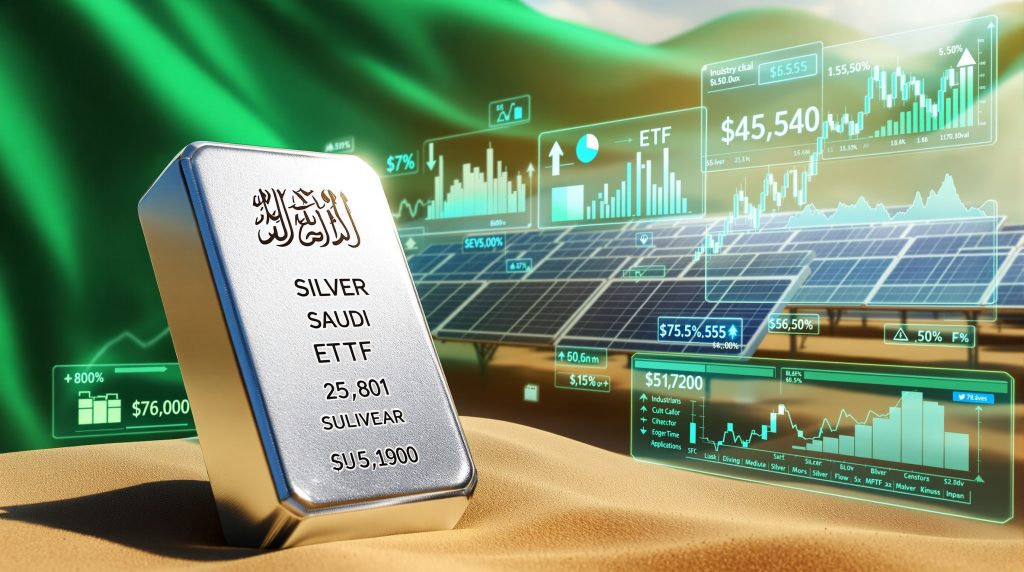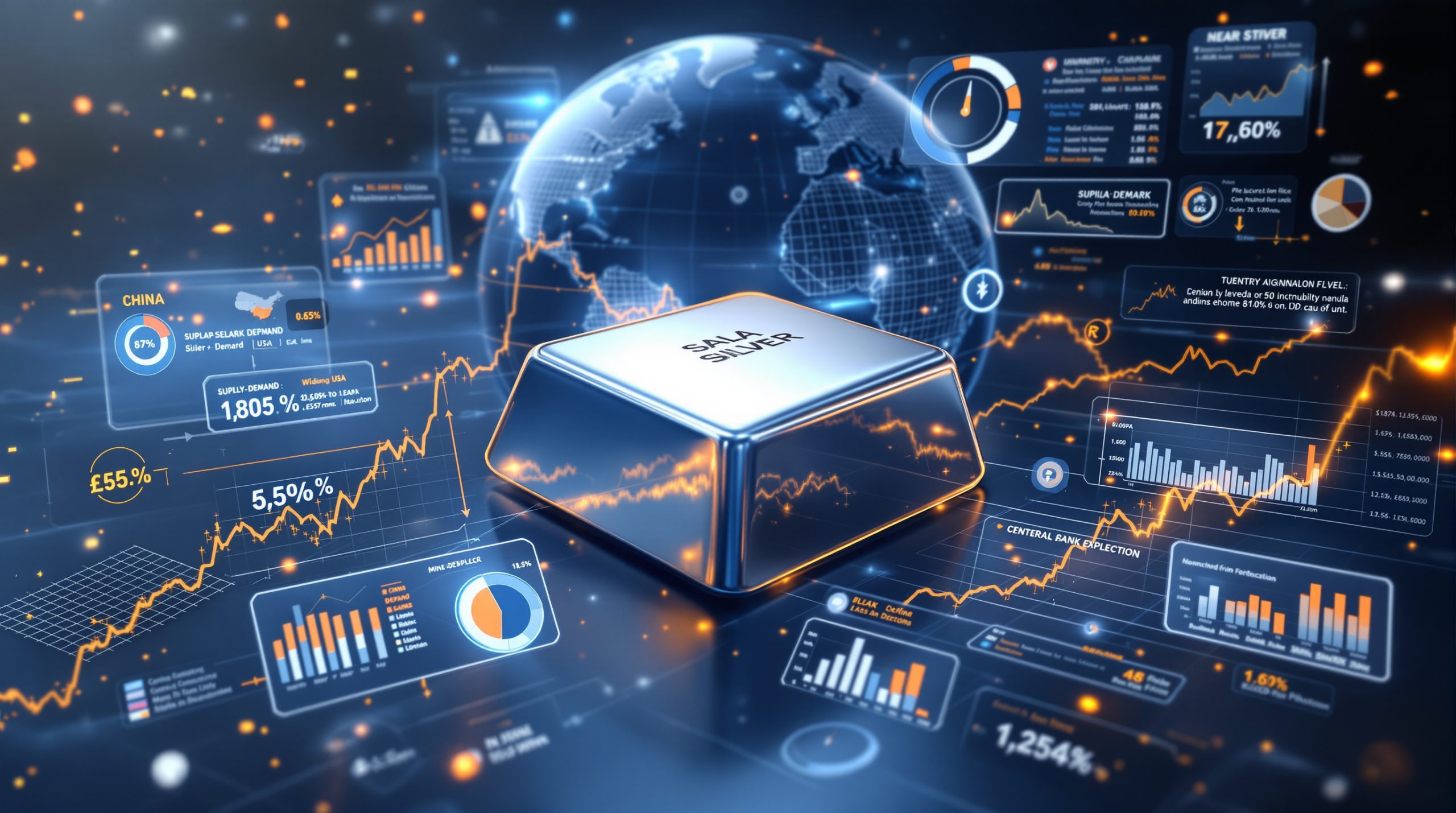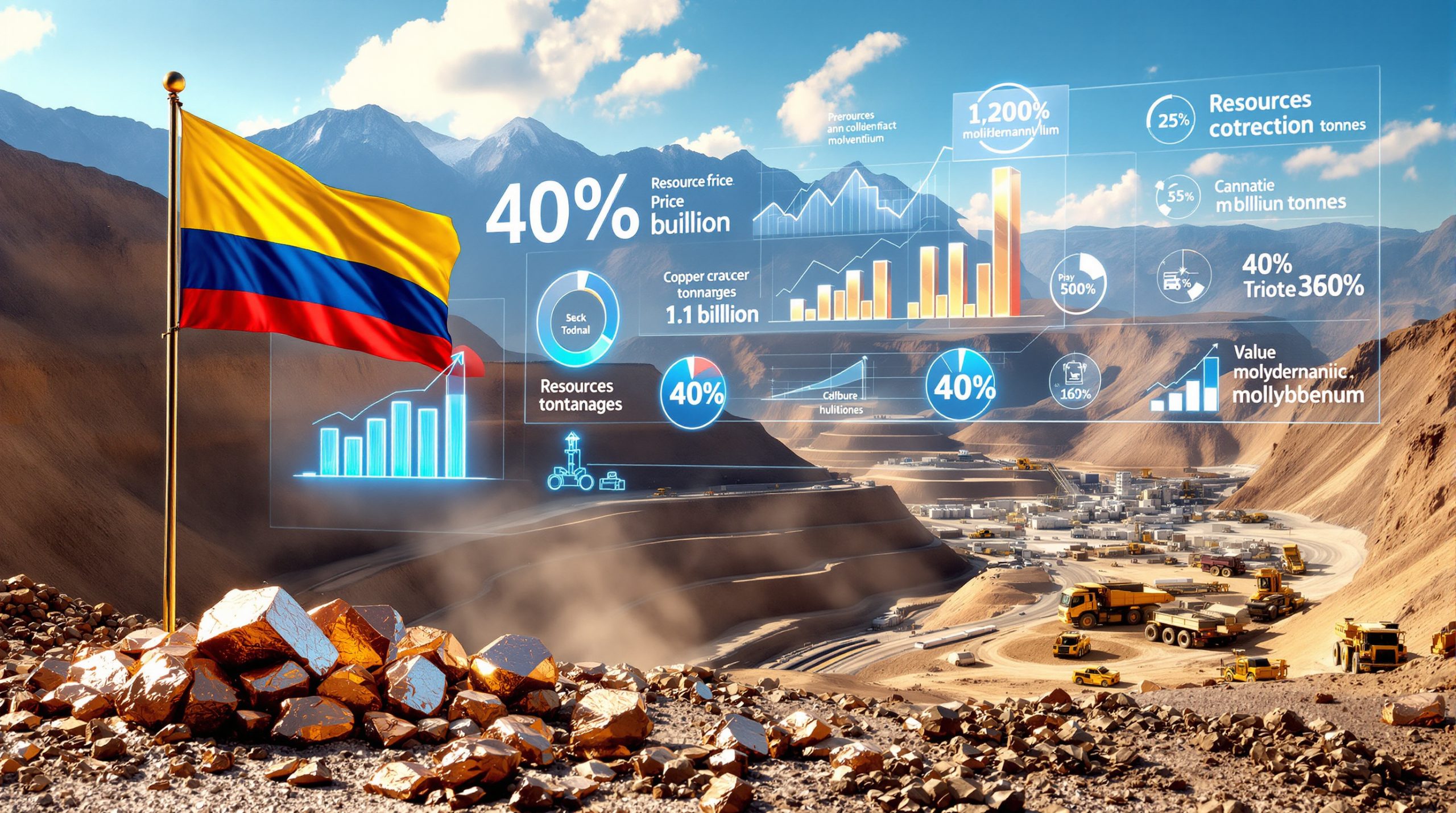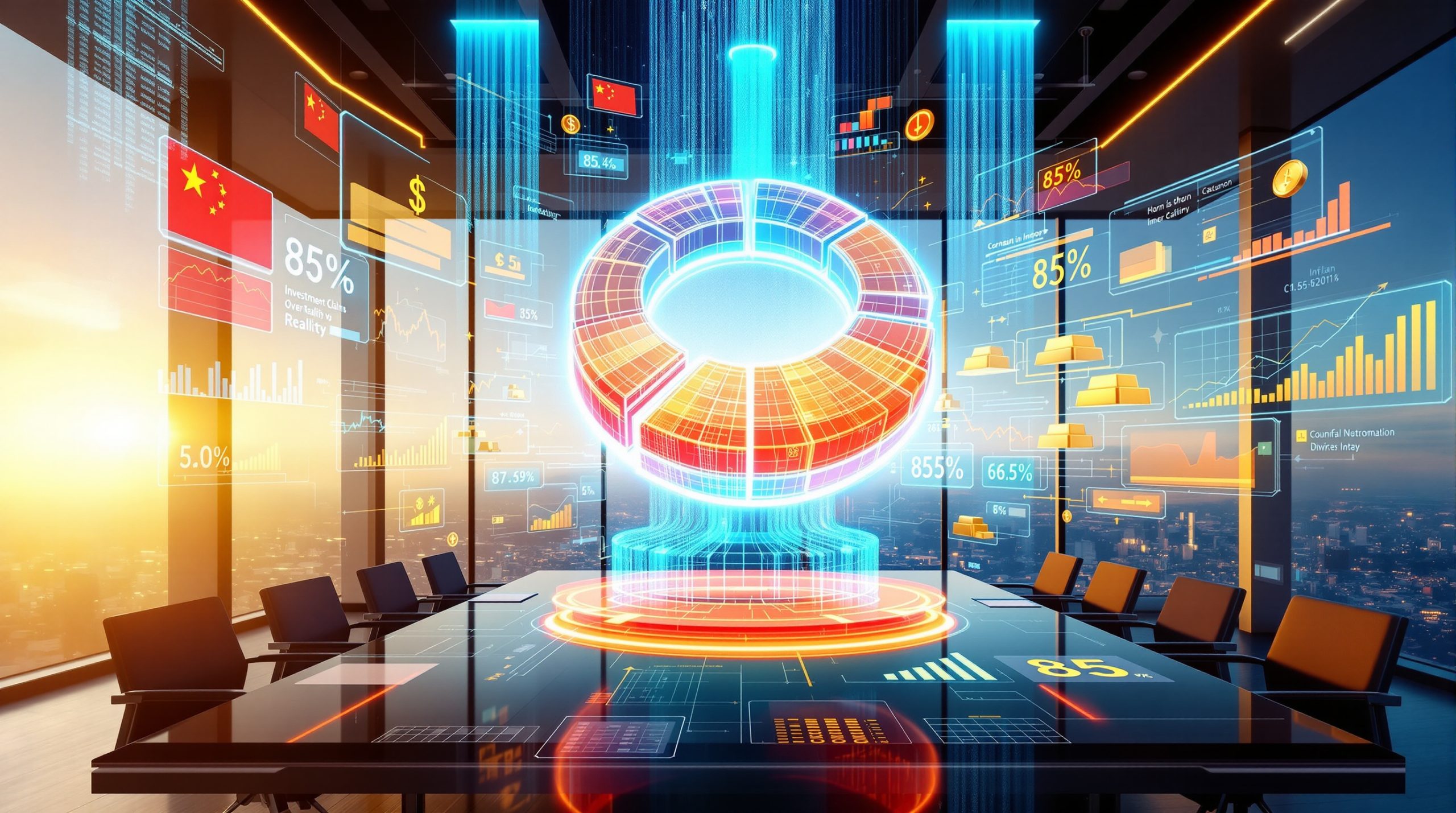What's Driving Saudi Arabia's Interest in Silver Investments?
The Strategic Shift Toward Precious Metals
Saudi Arabia has made headlines with its strategic investments in silver-related assets, primarily through exchange-traded funds (ETFs). This marks a significant shift in the kingdom's investment approach, moving beyond traditional assets toward precious metals with both monetary and industrial value. While the exact investment figures would require verification through official Saudi government sources or regulatory filings, market analysts have noted this evolving interest in silver as part of a broader diversification strategy.
The kingdom's sophisticated approach to gaining silver market exposure suggests a forward-thinking perspective that balances financial returns with strategic positioning. By utilizing financial instruments rather than physical holdings, Saudi Arabia demonstrates a nuanced understanding of modern precious metals investment strategies.
Economic Diversification Objectives
The kingdom's interest in silver aligns with its broader Vision 2030 economic diversification program. As Saudi Arabia works to reduce its dependence on oil revenues, alternative investments in precious metals represent a logical step toward building a more resilient financial portfolio. This diversification strategy helps protect against currency fluctuations and provides a hedge against inflation—particularly important as global monetary policies remain uncertain.
Market analysts familiar with Saudi Arabia's economic planning suggest that precious metals investments represent a small but significant component of the kingdom's efforts to create multiple revenue streams beyond hydrocarbons. This strategic pivot acknowledges both the finite nature of oil reserves and the need for stable stores of value in an increasingly volatile global economy.
Industrial Applications and Future Planning
Saudi Arabia's vast desert regions present significant potential for solar energy development, where silver plays a crucial role in photovoltaic technology. Financial experts with decades of experience in wealth management, like Clive Thompson (with over 47 years in trust management and Swiss private banking), suggest that Saudi Arabia may be strategically positioning itself for future renewable energy initiatives by securing interests in silver.
Thompson notes that this forward-thinking approach could be a form of "front-running" anticipated silver demand, particularly as the kingdom considers its long-term energy strategy beyond fossil fuels. By securing silver assets now, Saudi Arabia could gain a competitive advantage in future solar manufacturing initiatives, effectively hedging against both rising silver prices and potential supply constraints in critical minerals.
The industrial demand for silver in solar panels continues to grow, with each panel requiring a significant amount of the metal for optimal conductivity. By investing in silver now, Saudi Arabia positions itself advantageously before potential silver market squeeze scenarios emerge as global solar installation accelerates.
How Is Saudi Arabia Approaching Silver as an Investment?
ETF Investment Strategy vs. Physical Holdings
Rather than accumulating physical silver bullion, market observations suggest Saudi Arabia has opted for ETF investments, which offer several strategic advantages:
- Enhanced Liquidity: ETFs can be traded quickly without the logistical challenges of physical metal
- Reduced Storage Costs: No need for secure vaults or insurance for physical holdings
- Diversified Exposure: Mining ETF components provide exposure to silver producers, not just the metal itself
- Market Flexibility: Positions can be adjusted rapidly in response to changing market conditions
This approach indicates a sophisticated financial strategy rather than a traditional central bank reserve-building exercise. Financial experts suggest that ETF investments allow Saudi Arabia to maintain flexibility while still gaining exposure to silver's price movements and the performance of mining companies in the sector.
Financial Asset Diversification
The silver investments represent a calculated diversification play within Saudi Arabia's broader sovereign wealth strategy. This suggests a measured approach to precious metals rather than a fundamental shift in reserve management philosophy. The kingdom appears to be testing the waters with silver while maintaining its primary focus on more traditional assets.
Investment professionals note that this incremental approach aligns with prudent portfolio management principles. As Thompson suggests for individual investors: "If you're buying gold or silver and this is your first foray into it, don't go all in on day one. Buy a smaller amount and then see how you feel." This measured strategy allows for position adjustment as market conditions evolve.
Market Timing Considerations
Saudi Arabia's entry into silver investments coincides with several favorable market conditions:
- Rising industrial demand for silver in green technologies
- Increasing investor interest in precious metals amid global uncertainties
- Growing supply constraints from major silver-producing regions
- Technical breakouts in silver prices after years of consolidation
This timing suggests a deliberate strategy to enter the market as silver's fundamentals strengthen. Market observers note that Saudi Arabia has historically demonstrated patience and strategic timing with major investment initiatives, suggesting their silver positions may be based on long-term industrial and monetary trends rather than short-term speculative opportunities.
What Are the Market Implications of Saudi Arabia's Silver Investment?
Impact on Global Silver Prices
While any sovereign investment represents a modest position relative to the overall silver market, the symbolic importance of Saudi Arabia's entry cannot be underestimated. The kingdom's involvement sends a powerful signal to other institutional investors and sovereign wealth funds about silver's potential value. This could trigger a cascading effect as other large investors reconsider silver allocation in their portfolios.
According to precious metals analysts, sovereign investments often carry outsized influence beyond their dollar value due to the market's perception of the sophisticated analysis that typically precedes such decisions. When countries with substantial financial resources and research capabilities invest in a commodity, other market participants often take notice.
Supply-Demand Dynamics
The global silver market faces growing supply constraints, with:
- Annual mine production struggling to keep pace with demand
- Industrial consumption increasing, particularly in electronics and solar sectors
- Investment demand showing signs of resurgence after years of relative dormancy
Industry experts like Thompson note that the Silver Institute forecasts approximately 200 million ounces of silver for investment purposes annually. When calculating the implications of this figure, Thompson observes this represents just "one ounce per 45 people" globally, highlighting the relatively small size of the investment silver market compared to potential demand if investor interest continues to grow.
This tight supply-demand balance means even modest increases in institutional interest could have magnified effects on price discovery. Saudi Arabia's entry adds another significant player competing for available supply, potentially accelerating the silver squeeze movement that some market participants have been anticipating.
Psychological Market Effect
The psychological impact on the silver market may exceed the direct financial influence of sovereign investments. The reputation for sophisticated financial management means market moves by national investors are closely watched and often emulated by other institutional investors. This attention could amplify the market response beyond what the actual investment size would suggest.
Market psychology experts note that precious metals markets are particularly susceptible to sentiment shifts, as they blend both industrial utility and monetary perception. When a major sovereign entity makes a visible move into silver, it can trigger reassessment by investors who previously overlooked the metal in favor of gold or purely financial assets.
How Does Saudi Arabia's Silver Trade Activity Compare Historically?
Import and Export Trends
Saudi Arabia's silver trade patterns have shown evolution over time, though specific figures would require verification through official trade statistics from Saudi customs authorities or international trade databases like UN Comtrade. Historical trade data analysis could reveal shifts in how the kingdom engages with the silver market, potentially moving from primarily importing to developing more balanced trade relationships.
Commodities market analysts note that countries with strategic industrial initiatives often show evolving trade patterns that precede major economic shifts. Tracking the import-export balance and primary trading partners could provide insight into Saudi Arabia's longer-term intentions regarding silver.
Domestic Market Development
The Saudi Arabian domestic precious metals market has experienced notable development in recent years, with:
- Increasing infrastructure for precious metals trading and investment
- Growing interest in silver as both an investment and industrial input
- Development of local expertise in precious metals management
- Expanding regulatory frameworks for metals markets
These developments indicate a maturing approach to the silver market beyond simple investment allocation. Industry observers note that countries developing domestic precious metals expertise often follow with more substantial market participation, suggesting Saudi Arabia's current moves may be preliminary steps in a longer-term strategic vision.
What Are the Long-Term Implications for Global Silver Markets?
Potential for Increased Institutional Investment
Saudi Arabia's entry into silver investments could serve as a catalyst for broader institutional interest. As a respected sovereign investor, the kingdom's allocation decisions are closely monitored by:
- Other sovereign wealth funds seeking diversification
- Pension funds evaluating alternative assets
- Institutional investors reassessing precious metals allocations
- Family offices looking for inflation hedges
This potential network effect could significantly impact silver demand in coming years. Market analysis suggests that institutional participation in silver markets remains relatively limited compared to gold, creating substantial room for growth if major players begin to allocate even small portfolio percentages to the metal.
Industrial Demand Considerations
The kingdom's investment coincides with accelerating industrial demand for silver, particularly in:
- Solar energy technologies (photovoltaic cells)
- Electronics and semiconductor manufacturing
- Medical applications and antimicrobial uses
- Electric vehicle components and infrastructure
Saudi Arabia may be positioning itself advantageously ahead of projected supply constraints in these critical sectors. Industry specialists note that green energy transitions globally will require substantial silver inputs, with each gigawatt of solar capacity requiring significant quantities of the metal. The kingdom's desert regions provide ideal conditions for solar energy development, creating natural synergy between their silver investments and potential future industrial applications.
Market Structure Evolution
The silver market has historically been more volatile and less liquid than gold, but increased institutional participation could lead to:
- Greater market depth and liquidity
- More sophisticated price discovery mechanisms
- Development of advanced silver derivatives and investment products
- Reduced volatility through broader market participation
Saudi Arabia's entry may contribute to this market maturation process. Financial market experts observe that commodities markets typically evolve through distinct phases, with early volatile periods giving way to more stable, liquid markets as institutional participation increases. Silver may be entering such a transition, particularly if other sovereign entities follow Saudi Arabia's lead.
How Does Saudi Arabia's Approach Compare to Other Central Banks?
Contrasting Reserve Strategies
Saudi Arabia's approach to silver differs notably from traditional central bank precious metals strategies. While specific comparative details would require verification through official central bank reports, several key differences have been observed by market analysts:
Financial instruments versus physical holdings represent a fundamental difference in approach. Most central banks focus on physical gold bullion rather than market-based investment vehicles. Saudi Arabia's apparent preference for ETF exposure suggests a more market-oriented, flexible approach than the traditional central bank focus on long-term holdings.
The emphasis on silver alongside or instead of gold also marks a departure from conventional central bank strategy. Gold remains the dominant precious metal in official reserves globally, with silver playing a minimal role in most countries' monetary reserves. This divergence suggests Saudi Arabia may be considering industrial applications alongside monetary properties.
Regional Influence
As an economic leader in the Middle East, Saudi Arabia's investment decisions often influence regional financial strategies. Other Gulf Cooperation Council (GCC) countries may follow suit with similar precious metals allocations, potentially creating a regional trend toward diversification beyond gold.
Regional financial experts note that Saudi financial decisions often create ripple effects throughout Middle Eastern markets. The kingdom's size and economic influence make it a natural leader in investment trends, particularly for neighboring states with similar economic profiles and challenges.
Central Bank Silver Holdings Context
While central banks globally hold approximately 35,500 tonnes of gold reserves according to the World Gold Council, official silver holdings are minimal. Saudi Arabia's ETF-based approach represents a novel hybrid strategy that acknowledges silver's dual role as both a precious metal and an industrial commodity.
Monetary policy analysts observe that central banks have historically favored gold for its pure monetary role, while silver's industrial applications have kept it largely outside official reserves. Saudi Arabia's interest may signal a reevaluation of this traditional divide, recognizing the strategic value of controlling resources with both monetary and industrial applications.
What Investment Strategies Can Be Learned from Saudi Arabia's Approach?
Diversification Principles
Saudi Arabia's silver investment demonstrates several key diversification principles that individual investors might consider:
- Asset Class Expansion: Moving beyond traditional investments
- Dual-Purpose Assets: Selecting metals with both monetary and industrial applications
- Vehicle Optimization: Using ETFs for efficient market exposure
- Strategic Timing: Entering during favorable market conditions
- Proportional Allocation: Maintaining appropriate size relative to overall portfolio
These principles can be applied by investors at various scales when considering precious metals allocation. Investment professionals like Thompson suggest a measured approach to precious metals investing, advising those new to the sector to "buy a smaller amount and then see how you feel" rather than committing full positions immediately.
Balancing Physical and Financial Exposure
The kingdom's apparent preference for ETF exposure over physical holdings highlights the practical considerations for large investors:
- Liquidity Requirements: Maintaining ability to adjust positions quickly
- Storage Logistics: Avoiding the complexities of physical security
- Management Efficiency: Reducing administrative overhead
- Market Access: Gaining exposure to both the metal and mining equities
- Transparency Considerations: Operating within public market frameworks
This balanced approach offers lessons for institutional and individual investors alike. Wealth management experts note that ETFs provide efficient market exposure without the logistical challenges of physical metal, while still capturing price movements and providing portfolio diversification benefits.
Long-Term Positioning Strategy
Saudi Arabia appears to be implementing a patient, forward-looking strategy rather than seeking short-term trading profits. This approach emphasizes:
- Fundamental Value: Focusing on silver's intrinsic industrial and monetary properties
- Supply-Demand Dynamics: Positioning ahead of projected market tightness
- Technological Trends: Aligning with green energy and technological growth
- Portfolio Resilience: Building protection against currency debasement
- Optionality Value: Creating future flexibility through diverse asset holdings
Investment strategists note that this long-term orientation aligns with the kingdom's broader economic planning horizons. Rather than seeking immediate returns, the silver positions appear designed to capitalize on multi-year or even multi-decade trends in both monetary systems and industrial technology.
How Might Saudi Arabia Expand Its Silver Strategy in the Future?
Potential Development Pathways
Several logical expansion options exist for Saudi Arabia's silver strategy:
- Increased Allocation: Scaling up ETF investments as initial positions prove successful
- Physical Accumulation: Adding physical silver holdings to complement financial exposure
- Mining Investments: Direct stakes in silver mining operations for vertical integration
- Domestic Infrastructure: Developing silver vaulting and trading capabilities within the kingdom
- Product Development: Creating Shariah-compliant silver investment products for regional investors
These pathways would represent a natural evolution of the current strategy. Market analysts note that sovereign investors typically enter new asset classes in phases, beginning with market-based exposure before potentially developing more sophisticated approaches as expertise and comfort with the sector grows.
Integration with Industrial Planning
Saudi Arabia could further integrate its silver investment strategy with industrial development plans:
- Solar Manufacturing: Developing domestic solar panel production using secured silver supplies
- Electronics Sector: Supporting growth in high-tech manufacturing requiring silver inputs
- Medical Technology: Investing in silver-based antimicrobial applications and healthcare technologies
- Water Purification: Utilizing silver's properties for critical water treatment infrastructure
This integration would maximize the strategic value of silver beyond pure financial returns. Economic development specialists observe that the kingdom's Vision 2030 program emphasizes precisely these types of advanced manufacturing and technology sectors, creating natural synergies with silver's industrial applications.
Regional Leadership Opportunities
As a first mover among major Middle Eastern investors, Saudi Arabia has an opportunity to establish regional leadership in silver markets:
- Trading Hub Development: Creating a regional silver trading and storage center
- Price Discovery: Influencing how silver is valued in regional transactions
- Investment Products: Developing specialized silver investment vehicles for Islamic finance
- Knowledge Center: Building expertise in precious metals management and strategy
Financial market experts note that the kingdom has successfully established regional leadership in other financial sectors, suggesting similar potential in precious metals markets. Saudi Arabia's economic size, regulatory framework, and investment resources position it well to become a regional center for silver trading and investment if it chooses to pursue this direction.
What Should Investors Watch for Following Saudi Arabia's Silver Investments?
Key Market Indicators
Investors should monitor several indicators to gauge the impact and potential follow-through of Saudi Arabia's silver strategy:
- ETF Holdings: Changes in overall silver ETF positions globally
- Other Sovereign Announcements: Similar moves by other national investors
- Premium/Discount Patterns: Shifts in the relationship between paper and physical silver prices
- Mining Equity Performance: Reactions in silver mining stocks beyond direct ETF holdings
- Central Bank Communications: Any mentions of silver in official monetary discussions
These signals will help determine whether Saudi Arabia's move represents an isolated decision or the beginning of a broader trend. Market analysts suggest that the most significant impact may come not from the kingdom's initial positions but from any subsequent increases or expansions of their silver strategy.
Supply Chain Developments
The industrial silver supply chain may experience significant changes worth monitoring:
- Long-Term Contracting: Increases in direct long-term supply agreements
- Refining Capacity: Expansion of silver refining operations globally
- Recycling Initiatives: Growth in silver recycling to address supply constraints
- Exploration Investment: Increased funding for silver exploration projects
- Technological Substitution: Efforts to reduce silver content in industrial applications
Supply chain experts note that even modest increases in demand can trigger significant responses throughout the production and distribution network. Investors should watch for signs that suppliers are adjusting to accommodate increased institutional interest in silver.
Price Action Patterns
Silver price behavior following Saudi Arabia's investment may provide insights into market dynamics:
- Volatility Changes: Potential stabilization as institutional involvement increases
- Technical Breakouts: Movements above long-term resistance levels
- Gold-Silver Ratio: Shifts in the historical relationship between gold and silver prices
- Futures Curve Structure: Changes in contango/backwardation patterns
- Regional Price Differentials: Emerging premiums in Middle Eastern silver markets
Technical analysts observe that silver markets have historically shown distinct phases of accumulation, breakout, and price discovery. Significant institutional entry could accelerate transitions between these phases, particularly if it triggers broader market participation.
FAQ: Saudi Arabia's Silver Investment Strategy
Why is Saudi Arabia investing in silver rather than just gold?
Saudi Arabia likely recognizes silver's dual role as both a precious metal with monetary properties and an industrial metal with growing technological applications. This dual nature provides both inflation protection and exposure to industrial growth trends, particularly in green energy technologies where silver is essential. While the kingdom maintains substantial gold interests, silver offers complementary benefits and potentially higher growth prospects due to its relatively small market size and industrial demand drivers.
Thompson and other financial experts suggest that silver's critical role in solar panel manufacturing aligns particularly well with Saudi Arabia's geographic advantages for solar energy development. By securing silver assets now, the kingdom positions itself advantageously for both portfolio diversification and potential industrial applications.
Is Saudi Arabia treating silver as an official reserve asset?
Saudi Arabia's silver investments appear to be financial asset allocations rather than formal monetary reserves. The kingdom has chosen ETF vehicles rather than physical bullion, suggesting a financial investment approach rather than a fundamental change to its reserve composition. This strategy allows for greater flexibility and liquidity compared to traditional reserve holdings.
Monetary policy analysts note that this approach differs substantially from traditional central bank precious metals strategies, which typically focus on physical gold holdings as official reserves. The ETF-based approach suggests Saudi Arabia views silver primarily as a strategic investment rather than a core monetary asset.
How significant is Saudi Arabia's investment to the overall silver market?
While specific investment figures would require verification through official sources, the symbolic importance of Saudi Arabia's entry exceeds its direct financial impact. As a sophisticated sovereign investor, the kingdom's allocation decisions are closely watched and often emulated by other institutional investors. This could trigger increased interest in silver from other large investors, potentially creating a multiplier effect on market impact.
Market analysts note that the silver market's relatively small size compared to gold or major financial markets means that even modest institutional allocations can have significant impact. The total annual investment demand for silver is approximately 200 million ounces according to Silver Institute forecasts, meaning that sovereign investor participation could meaningfully influence overall demand patterns.
Could Saudi Arabia's investment signal a coming silver shortage?
Saudi Arabia's timing suggests strategic positioning ahead of potential supply constraints. Global silver production faces challenges keeping pace with growing industrial demand, particularly from solar energy, electronics, and medical applications. The kingdom may be recognizing these fundamental supply-demand imbalances and positioning accordingly before they become more widely acknowledged.
Supply chain specialists note that silver differs from gold in that roughly 50% of annual demand comes from industrial applications rather than investment. This industrial demand continues to grow, particularly in green energy technologies, while mine supply growth remains constrained. This fundamental imbalance creates potential for silver market premiums to increase as forward-thinking investors anticipate these trends.
How does Saudi Arabia's approach differ from traditional central bank precious metals strategies?
Unlike traditional central banks that focus primarily on physical gold holdings as monetary reserves, Saudi Arabia has taken a more innovative approach by using ETFs to gain silver exposure. This includes both direct silver price exposure and mining equity exposure, representing a hybrid strategy that acknowledges silver's dual monetary and industrial roles.
Financial historians observe that central banks have historically shown limited interest in silver as a reserve asset, focusing almost exclusively on gold for their precious metals allocations. Saudi Arabia's apparent interest in silver represents a departure from this tradition, potentially reflecting both the metal's industrial importance and its historical monetary role.
The Strategic Significance of Saudi Arabia's Silver Investment
Saudi Arabia's interest in silver investments represents more than just a financial allocation—it signals a sophisticated understanding of silver's unique position at the intersection of monetary and industrial metals. The kingdom's approach demonstrates forward-thinking strategic positioning ahead of potential supply constraints and growing industrial demand, particularly in technologies aligned with global energy transition.
While the precise size of Saudi Arabia's silver investments would require verification through official sources, the market significance extends beyond immediate financial impact. It potentially marks the beginning of broader institutional interest in silver beyond traditional retail and specialist investors. The kingdom's apparent preference for ETF exposure rather than physical holdings also highlights practical considerations for large investors seeking efficient market participation.
As global monetary uncertainty continues and industrial silver demand accelerates, Saudi Arabia's early positioning may prove prescient. The recent implementation of tariffs and silver prices has added another layer of complexity to the market, potentially influencing the kingdom's timing. Investors should monitor for similar moves by other sovereign and institutional investors, which could significantly impact silver's supply-demand dynamics and price discovery mechanisms in coming years.
The kingdom's silver strategy ultimately reflects a nuanced understanding of both financial diversification principles and industrial strategic positioning—a combination that may influence how other large investors approach precious metals allocation in an increasingly complex global economic landscape. For investors seeking to understand market dynamics, the current gold‐silver ratio insights may provide valuable context for Saudi Arabia's strategic decision-making in the precious metals space.
Ready to Capitalise on the Next Major Mineral Discovery?
Discover why major mineral discoveries can lead to substantial market returns by exploring Discovery Alert's dedicated discoveries page, where the proprietary Discovery IQ model instantly alerts investors to significant ASX mineral announcements, turning complex data into actionable insights. Begin your 30-day free trial today at https://discoveryalert.com.au/discoveries/ to position yourself ahead of the market.




